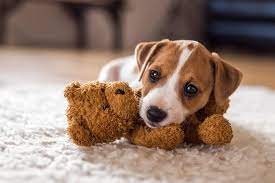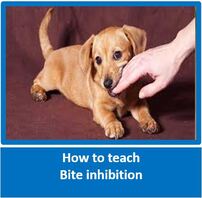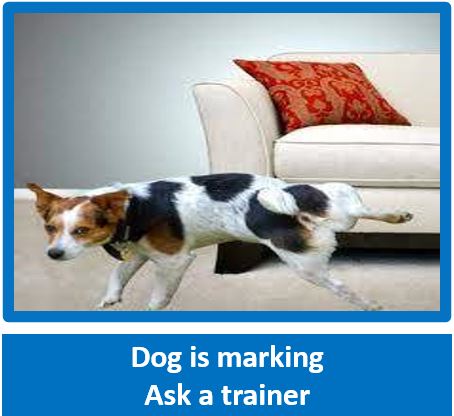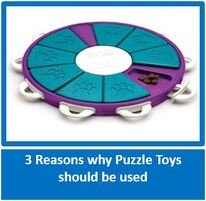
Please visit and LIKE our Facebook Page and share with family, friends and on your own Facebook page, and ask them to share further – it is only by working together and sharing knowledge and education that we can improve the lives of dogs and assist owners. We do not inundate you with posts – an average of 5 per week, and the odd Did You Know. Thank You!
Plan for a Successful Homecoming for your pup
By Scotty Valadao – Friends of the Dog
Tips to make puppy's transition from breeder to home easier.

Before you bring your pup home, you can leave a small blanket with the breeder that the pup can cuddle up on. This will help when the pup is brought home as it will have familiar scents on it.
Before the pup comes home you can, if you are close enough to visitor the breeder, start to get the pup used to the car which will eliminate the stress and hopefully the car sickness that so often happens in first time car rides for pups.
When you visit your pup before he comes home, turn this into a training exercise by getting the pup used to the crate or box that will be used to transport it. This can be done by using the same methods as crate training and if you have a really good breeder he may even allow the pup to sleep in the crate for a few days before coming home.
The next step is to pop the puppy into the crate of box and have it sitting on your friends lap or on the floor in front of her. Turn on the car and slowly drive around to get the pup used to the motion of the car ride. Some short rides such as this will get a pup totally used to the car and the ride home is then normally a pleasure. An additional thing you can do is to put newspaper both under the box or crate (helps to deaden the vibrations of the car) and inside the crate or box, in the case of any ‘accidents’. Remember that if you are driving a long distance to have plenty of ‘pit stops’ to exercise stiff legs and have a small drink of water. I find that if you have a really nice chewy for the pup to get stuck into, this also reduces the stress levels as it keeps the pups mind off the car and chewing helps to release tension - just ensure a solid chew toy such as a Kong or Busy Buddy buddy that is stuffed, and will not cause choling.
In order to make the transmission easier for both the pup and the family, plan ahead. and have all the equipment needed i.e. collar, lead, bed, crate, chew toys, puppy school etc.
Find out from the breeder what he is currently feeding and have it in the home. Pups often get an upset tummy due to stress when first coming home and you don’t want to make it worse by bringing in a change in food which could cause an upset tummy by itself. If you do intend to change the food, confer with your vet as to which brand will be best for your pup, then make the change slowly over 5-7 days, gradually adding in the new food . The safest way to do this is to remove 1 t or 1 T (large breed), and add in new food - do this for 24 hours, and if not upset tummy or no adverse reactions, continue this way until pup on all the new food. If there is a reaction, then get in touch with the vet.
Make an appointment with your vet as soon after the pup comes home as possible. The vet will give the pup a complete health check and make sure the inoculations are up to date. The client will not be able to attend puppy school unless your pup has had at least its first inoculations.
Start Toilet Training the second your pup comes home, to put in place a solid toilet training routine.
Until the puppy has settled, isolate it and introduce it to other members of the family one at a time, as well as other animal members of the family. Not only will this help your pup to cope, it will eliminate the chance of disease being spread to other animals until the pup has been to the vet.
Many people will only take their pups to school at about 16 weeks when they have had all the inoculations to ensure that they don’t ‘catch’ anything. Yes, there is a possibility that your dog may be exposed to certain diseases, but the benefits of taking advantage of the socialization period of 8 – 16 weeks, far outweighs the health risks. At a good puppy school, no pups are admitted until their inoculations have been examined prior to attendance and that the pup has received at least the first set of inoculations. A good school normally requests that if the pup does have a runny tummy or appears off colour, not to come to class and go immediately to your vet for a check up. Illness can progress very rapidly in a pup and early detection can prevent serious consequences as well as protect the rest of the pups in the class.
Try not to have visitors for the first few days. Take this time to get the pup familiar to its new home and to the whole family. Start immediately with the ‘house rules’ - it is never too early to bring these into play.
Although it is very temping to spend as much time with the pup as possible - don't! Rather set in place the routine will have when you are at work - this will get the pup used to what is 'normal' and prevent possible separation anxiety from occurring - something you don't want!
Things that you do to make their home safer.
Before the pup comes home you can, if you are close enough to visitor the breeder, start to get the pup used to the car which will eliminate the stress and hopefully the car sickness that so often happens in first time car rides for pups.
When you visit your pup before he comes home, turn this into a training exercise by getting the pup used to the crate or box that will be used to transport it. This can be done by using the same methods as crate training and if you have a really good breeder he may even allow the pup to sleep in the crate for a few days before coming home.
The next step is to pop the puppy into the crate of box and have it sitting on your friends lap or on the floor in front of her. Turn on the car and slowly drive around to get the pup used to the motion of the car ride. Some short rides such as this will get a pup totally used to the car and the ride home is then normally a pleasure. An additional thing you can do is to put newspaper both under the box or crate (helps to deaden the vibrations of the car) and inside the crate or box, in the case of any ‘accidents’. Remember that if you are driving a long distance to have plenty of ‘pit stops’ to exercise stiff legs and have a small drink of water. I find that if you have a really nice chewy for the pup to get stuck into, this also reduces the stress levels as it keeps the pups mind off the car and chewing helps to release tension - just ensure a solid chew toy such as a Kong or Busy Buddy buddy that is stuffed, and will not cause choling.
In order to make the transmission easier for both the pup and the family, plan ahead. and have all the equipment needed i.e. collar, lead, bed, crate, chew toys, puppy school etc.
Find out from the breeder what he is currently feeding and have it in the home. Pups often get an upset tummy due to stress when first coming home and you don’t want to make it worse by bringing in a change in food which could cause an upset tummy by itself. If you do intend to change the food, confer with your vet as to which brand will be best for your pup, then make the change slowly over 5-7 days, gradually adding in the new food . The safest way to do this is to remove 1 t or 1 T (large breed), and add in new food - do this for 24 hours, and if not upset tummy or no adverse reactions, continue this way until pup on all the new food. If there is a reaction, then get in touch with the vet.
Make an appointment with your vet as soon after the pup comes home as possible. The vet will give the pup a complete health check and make sure the inoculations are up to date. The client will not be able to attend puppy school unless your pup has had at least its first inoculations.
Start Toilet Training the second your pup comes home, to put in place a solid toilet training routine.
Until the puppy has settled, isolate it and introduce it to other members of the family one at a time, as well as other animal members of the family. Not only will this help your pup to cope, it will eliminate the chance of disease being spread to other animals until the pup has been to the vet.
Many people will only take their pups to school at about 16 weeks when they have had all the inoculations to ensure that they don’t ‘catch’ anything. Yes, there is a possibility that your dog may be exposed to certain diseases, but the benefits of taking advantage of the socialization period of 8 – 16 weeks, far outweighs the health risks. At a good puppy school, no pups are admitted until their inoculations have been examined prior to attendance and that the pup has received at least the first set of inoculations. A good school normally requests that if the pup does have a runny tummy or appears off colour, not to come to class and go immediately to your vet for a check up. Illness can progress very rapidly in a pup and early detection can prevent serious consequences as well as protect the rest of the pups in the class.
Try not to have visitors for the first few days. Take this time to get the pup familiar to its new home and to the whole family. Start immediately with the ‘house rules’ - it is never too early to bring these into play.
Although it is very temping to spend as much time with the pup as possible - don't! Rather set in place the routine will have when you are at work - this will get the pup used to what is 'normal' and prevent possible separation anxiety from occurring - something you don't want!
Things that you do to make their home safer.
- Invest in a crate – the difference a crate can make in the pup’s life and your clients has to be seen to be believed! You can close of a section of the kitchen or laundry and place the pups crate there or even invest in a puppy playpen. This provides the pup not only with a safe place to sleep but gives it a little play area where a tray with some grass on it which can be used as the toilet, or alternatively an area with newspapers, for when you are not around to take the pup out. Check with your breeder what surface the pup is currently using for elimination surfaces. By utilizing this substrate the pup is already used to, will make it easier for your pup to adapt. If a pup has been using a substrate such as grass for elimination purposes, provide the same substrate in the new home – failing to do this may result in the pup determining by itself which area should be used for elimination purposes – remember prevention is better than cure, ensure that the pup has easy access to the elimination area.
- By using a safe place and crate the owner can happily supply the pup with as many chew toys as you can think of. Remember not to leave any small pieces that the pup can choke on around and take away the chew toy when it gets small. Pups should never be left in a crate for a long time, and should always be desensitized to the crate in a positive manner - do read the link to article on Crates above.
- Use management and remove any objects that can be chewed or swallowed – remember the pup is on the floor, so don’t just look at items left on the table - see the room from the pups level!
- This is a good time to re-educate children (and husbands!) and insist that doors are closed and rooms kept tidy or at least there is nothing left lying on the floor such as shoes, socks etc.
- If you have low coffee tables, keep items off them for the time being. It is incredible how easily pups manage to get hold of items on low surfaces.
- If you are in the habit of keeping poisons, cleaning equipment, pool chemicals, medicines, rat poisons etc, in a cupboard close to the floor, change these to a place higher up where a pup can’t reach. A cupboard door just has to be left open a few centimetres and an inquisitive nose or paw can easily open the cupboard enough to get hold of the items there. A pup being poisoned in this way is a very common occurrence so please pay close attention. My own dog Brady, discovered at three months of age how to open cupboard all by himself and promptly started to eat a packet of fire lighters, which was not only could have proved to be fatal, it turned out to be very expensive as well!
- If your puppy is going to be allowed to roam by itself, protect wooden table legs and similar surfaces by spraying them with a spray bottle of water to which about 10 drops of pure Citronella oil is added. The majority of dogs do not like the smell of this and a bonus is that you don’t get mosquitoes either! Another alternative is to use of one the ‘pet off’ products sold at vets and pet shops. Make sure that your pup does not have access to any wires around the house. As mentioned above, remember to look at your home from the pups height, not your own!
- Check up on plants that can be poisonous to dogs simply by typing in ‘plants poisonous to dogs’ and doing a South Africa search on the internet. There really are a lot of them. Tell them also to check with their local garden centre if the fertilizer or compost you are using is pet friendly. Some of them, such as those containing ‘tobacco dust’ are poisonous to dogs.
- Choose the place that will be pups permanent place for its food and water bowl to stay. The location chosen should be in an easily accessible place, but not in a hallway where there is a large volume of people and perhaps pets coming and going. Buy a bowl with rubber at the bottom so that it doesn’t go skidding all over the place and have a responsible person to pick it up, wash it and put it away when it is not feeding time. This will help prevent possible food guarding problems if another dog is introduced at a later stage.
- When your pup first comes home, area such as stairs, security gates and balconies with bars can prove to be dangerous. Simply block these off from the pup or alternatively put up some plastic mesh to keep the pups safe. I myself used a baby gate to keep the pup out of areas that I did not want it to go into.
- Try to arrange to get your pup over a weekend so that you can spend some time with it, or take a few days off work. This will allow you to put your pups schedule into place, start toilet training and feeding schedules. The sooner you get your pup into a schedule the easier life with a new pup will become. Remember not tot to be with the pups on a 24/7 basis, or the pup will stress when the owners go back to work.
- Read the article on Introducing your pup to your other dogs and remember that the pup is the bottom of the canine pack – don’t pay too much attention to it (although very hard) or you will put your older dogs nose out of joint!
- Lastly the garden needs to be checked for gaps in the corners and under walls, holes in fences, as well as make sure that garden ponds and swimming pools are not assessable. With items such as these it is a good idea to get your dog used to them as soon as possible.




